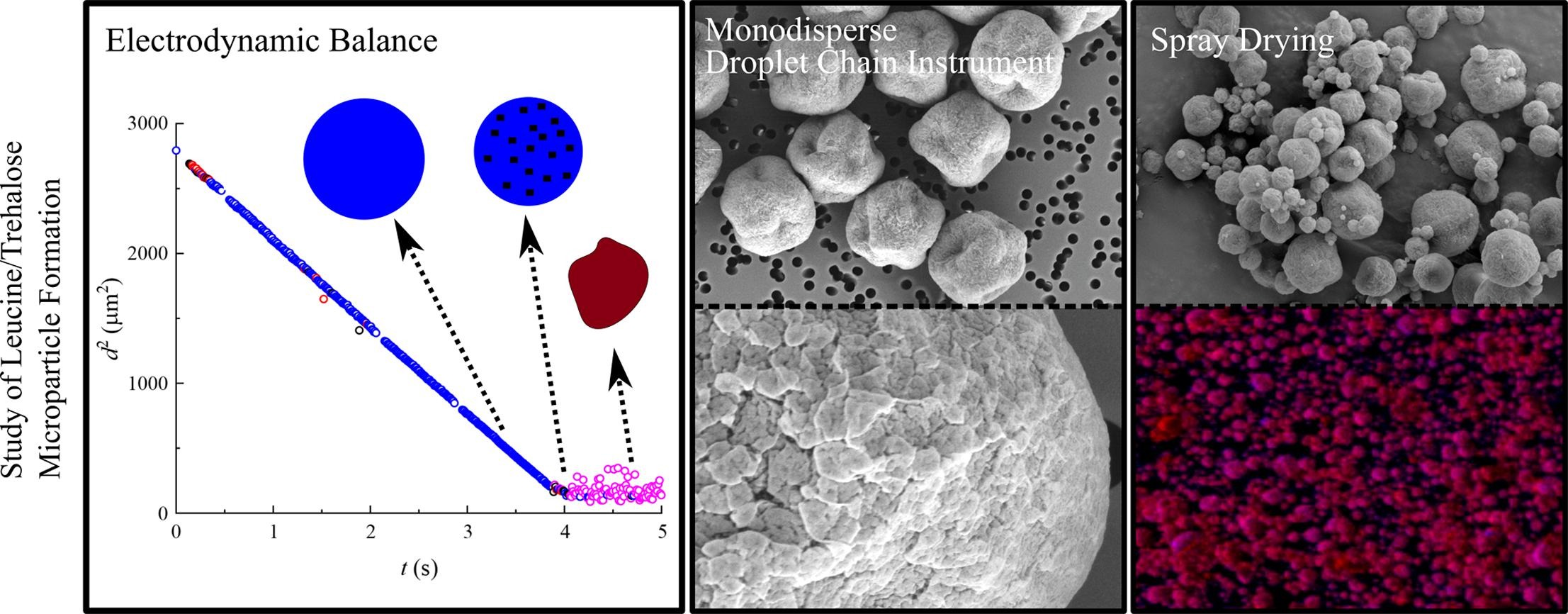On the particle formation of leucine in spray drying of inhalable microparticles

The particle formation of L-leucine, a dispersibility-enhancing amino acid used in the spray drying of inhalable pharmaceutical aerosols, was extensively studied using three experimental methods, and the results were interpreted with the aid of theory. A comparative-kinetics electrodynamic balance was used to study the shell formation behavior in single evaporating microdroplets containing leucine and trehalose.
Dispersibility enhancing capability of leucine is mostly due to its crystallization.
Other excipients or actives can hinder the crystallization of leucine.
Leucine is expected to undergo spontaneous nucleation at a supersaturation of 3.5.
Polydisperse spray-dried powders might have size-dependent levels of crystallinity.
Different concentration thresholds of solidification and shell formation were determined for trehalose and leucine, which were then used in the particle formation model to predict the properties of spray-dried particles. Furthermore, a droplet chain instrument was used to study the particle morphologies and particle densities that were not accessible in the single particle experiments. Lab-scale spray drying was also used to produce powders typical for actual pharmaceutical applications. Raman spectroscopy confirmed that a glass former, such as trehalose, can inhibit the crystallization of leucine. The surface compositions of these spray-dried powders were analyzed via time-of-flight secondary ion mass spectrometry. The leucine surface coverage in a polydisperse powder was determined to be a function of the particle size or the initial droplet diameter of each respective particle. This observation confirms the important role of leucine crystallization kinetics in its shell-forming capabilities.
A critical supersaturation ratio of 3.5 was also calculated for leucine, at which it is assumed to instantaneously nucleate out of solution. This ratio was used as the threshold for the initiation of crystallization. Crystallinity predictions for the leucine-trehalose particles based on this supersaturation ratio were in good agreement with the solid-state characterizations obtained by Raman spectroscopy. This study improves the fundamental understanding of the particle formation process of leucine-containing formulations, which can apply to other crystallizing systems and potentially facilitate the rational design of such formulations with reduced experimental effort.
Article Information: Mani Ordoubadi, Florence K.A. Gregson, Hui Wang, Mark Nicholas, Sandra Gracin, David Lechuga-Ballesteros, Jonathan P. Reid, Warren H. Finlay, Reinhard Vehring. International Journal of Pharmaceutics, 2020. https://doi.org/10.1016/j.ijpharm.2020.120102.

